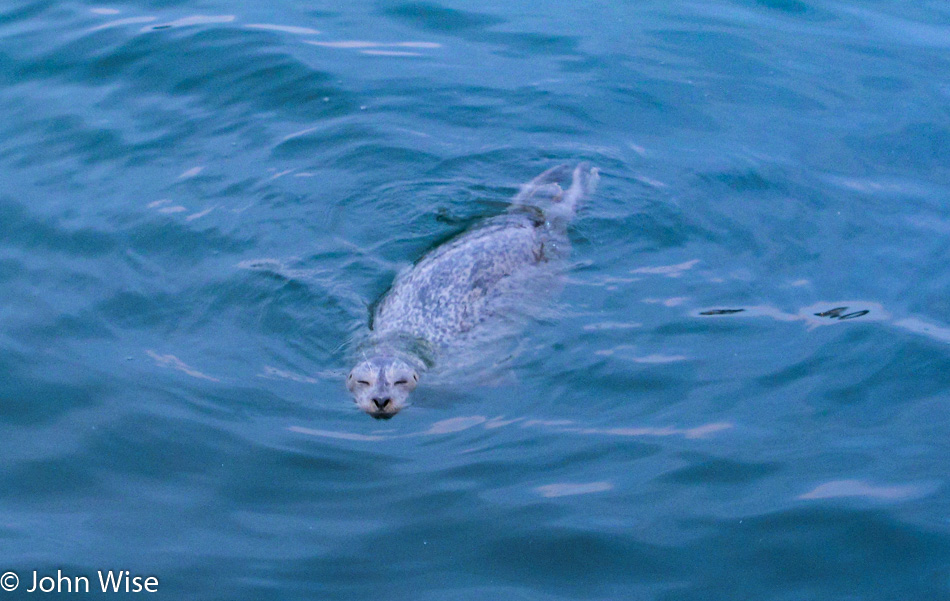
We’ve seen many a sea lion and seal sleeping on docks, small islands, rocky shores, and occasionally on someone’s boat, but we’ve never seen one sleeping in the water. Before we got here, though, we’d already stopped in at the Old Monterey Cafe over on Alverado for another great breakfast; we’re yet to be disappointed. We voiced our enthusiasm to the guy who opened the door for us, we were the first in after he unlocked it while also inviting us to come back early tomorrow if we’d like to do so before our 750-mile drive home. More often than not, a great attitude gets us far.
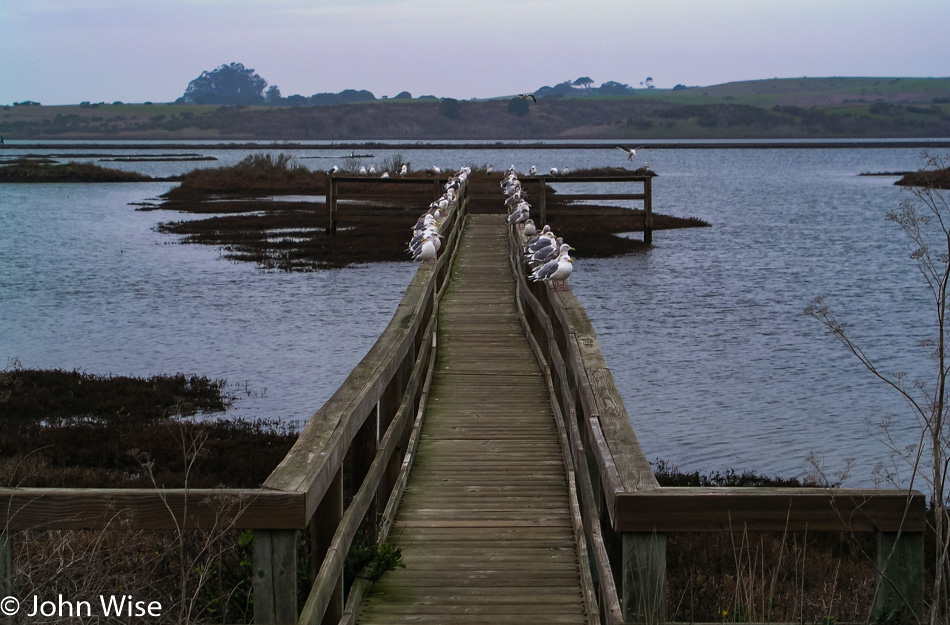
We have an appointment this morning a little further down the road in Moss Landing, so before we head that way, we’ve dipped into the Elkhorn Slough. We’ve not visited very many estuaries or maybe I should say not enough of them because I don’t know exactly how many we’ve been to. Our time is very limited, and we can’t be late for our next stop.
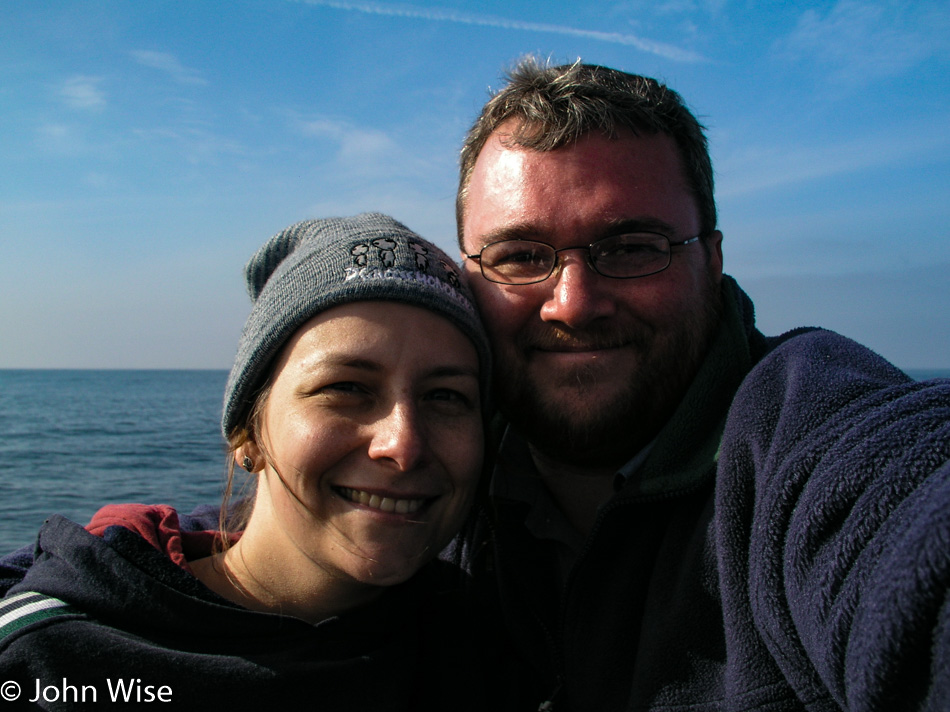
Our date was with Sanctuary Cruises to head out on Monterey Bay for some whale watching. We’ve tried this from shore seemingly hundreds of times with mostly poor results. This time, we’re hoping for some hot whale action and, if not some pirouettes, at last, some serious breaching.
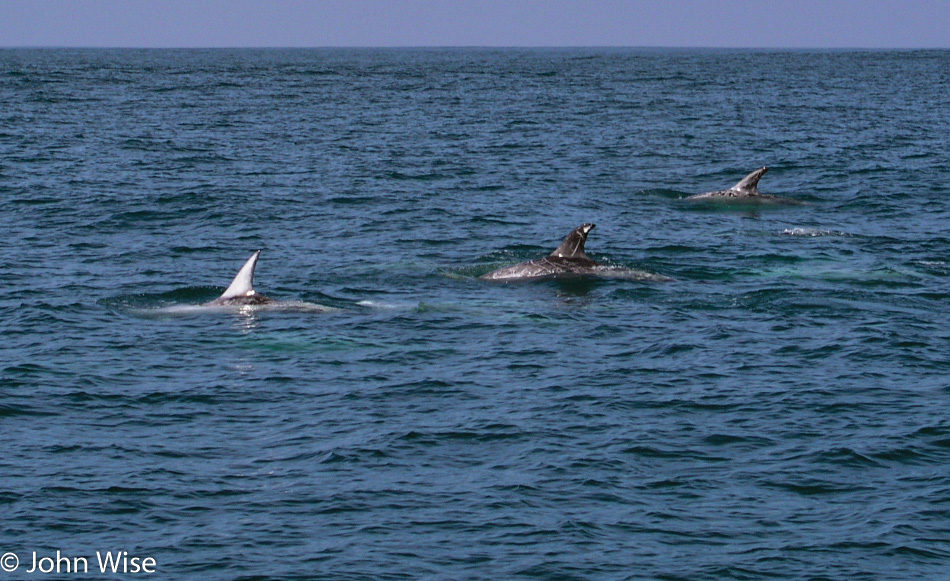
These Risso dolphins are signaling for us to follow them.
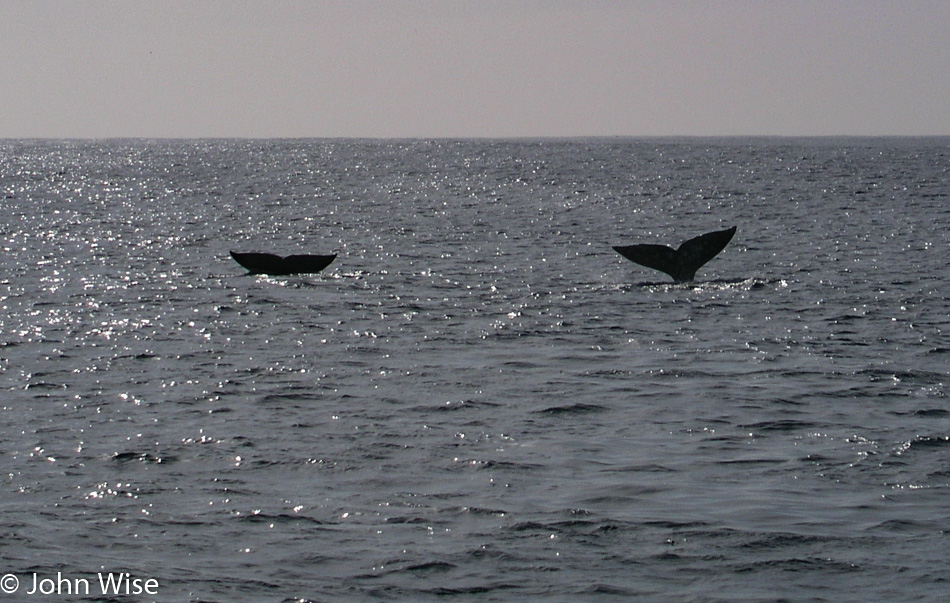
And there they were, whales. We at least got to see their spouting, humped backs, and a couple of flukes. Over the next hour, we spot more whales and more dolphins. Along the way, it strikes me how much freedom they enjoy compared to us, as they do not require passports as they roam their universe. They are free to explore, feed, and procreate unencumbered by the chains of civilization. We are planning on coming back one day when they have some breaching scheduled.
Back on the dock, we dip into Sanctuary’s giftshop where Caroline scores a t-shirt that will stay with us even should the memories of the whale encounter fade; it reads, “Whales are for Lookin’ Not for Cookin.'”
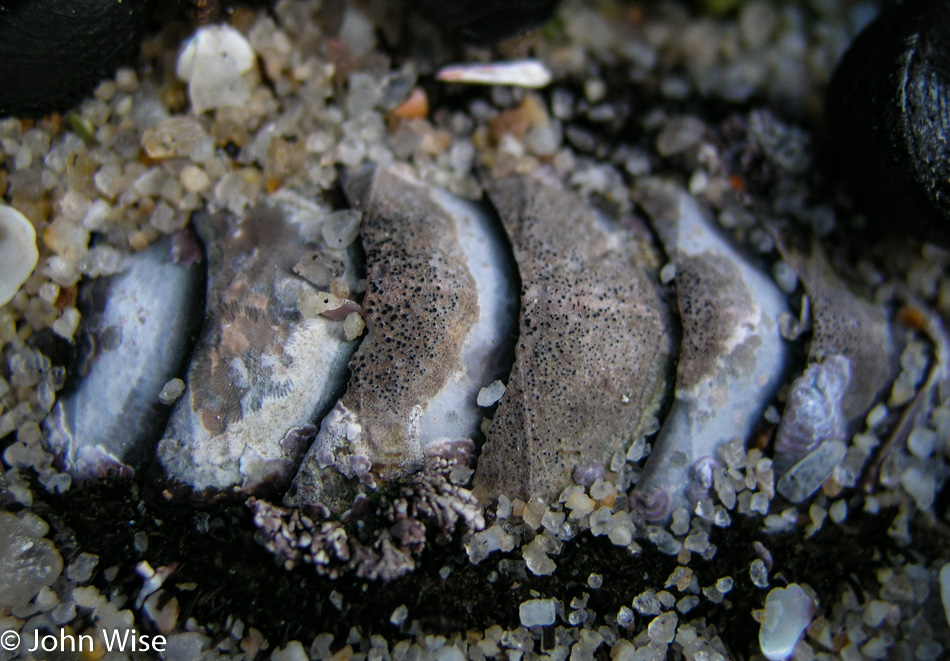
With another day of low tides, we used the opportunity to visit more tide pools. Wow, a chiton right there. This mollusk has roots that date back to the Devonian, about 400 million years ago. We could have headed back to the aquarium, but it’s not all that often we get to see so much sea life next to the shore while we are up here.
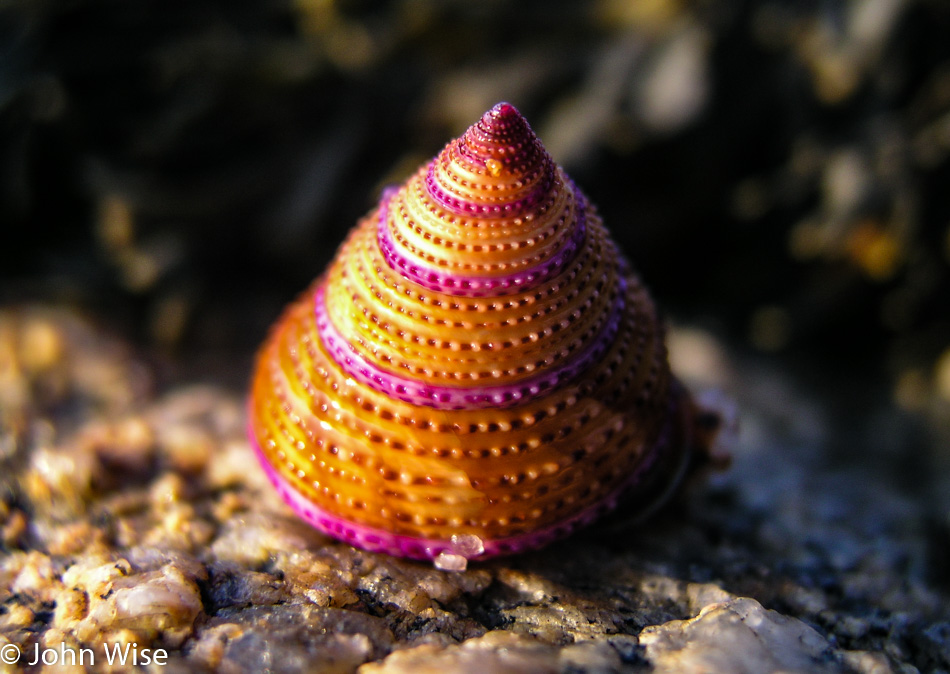
I’ll say this looks orange and pink to me; not sure Caroline will agree, but in my somewhat colorblind vision, that’s what it looks like to me. It’s also quite ornate in its concentric circles and bumps that almost look like jewels.
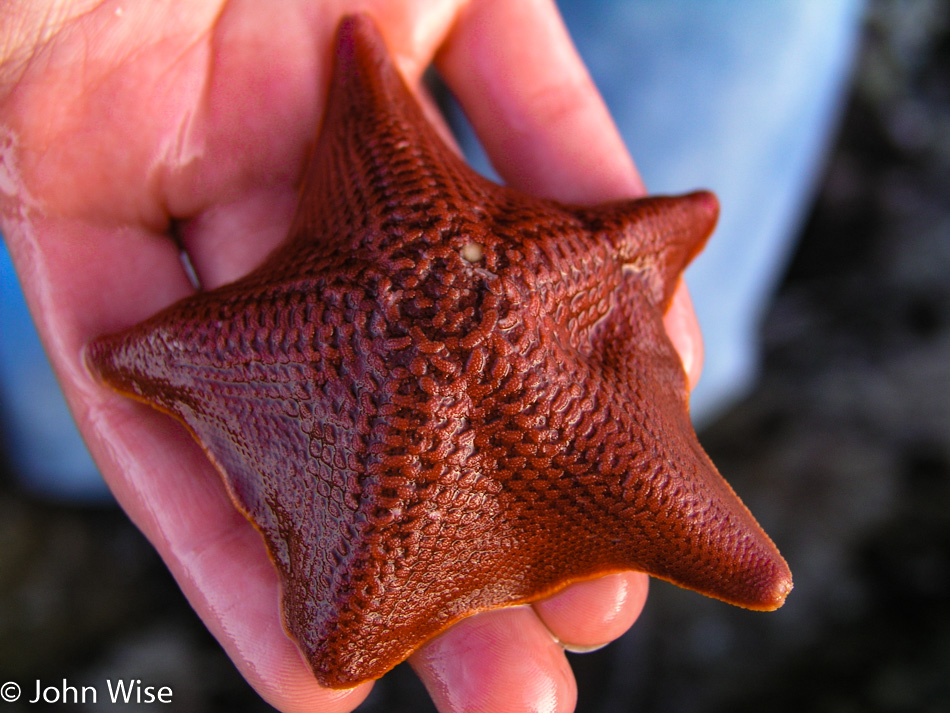
I wanted to write something about this starfish and was wondering how many types there are, but the answer blew me away. There are between 1,500 and 2,000 species of sea stars spread out across our oceans. These resilient survivors have been crawling around since the Ordovician about 450 million years ago and live anywhere from the shoreline to as deep as 20,000 feet below the surface.
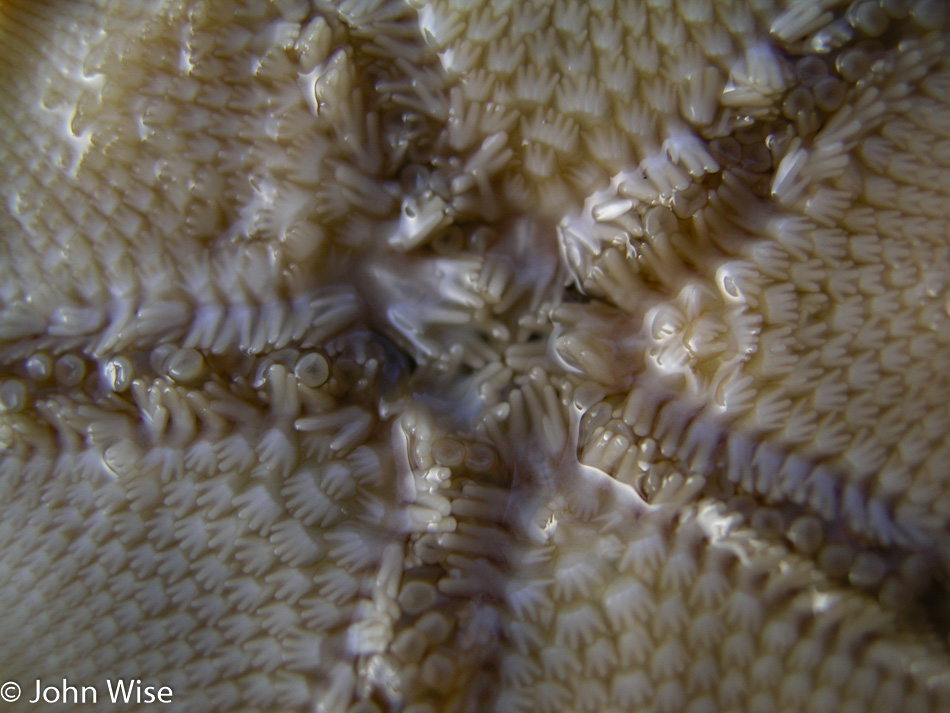
Usually, we only see starfish from above; this is the underside, and to me, it looks like hundreds, if not thousands, of tiny hands and fingers.
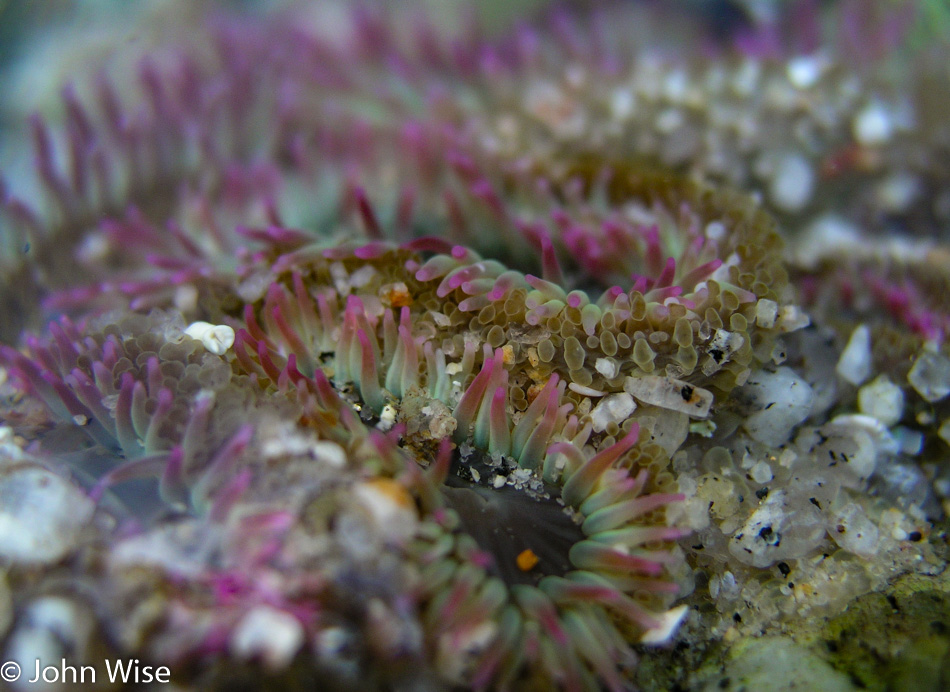
Don’t simply look at anemones as colorful but dull plant-like animals that just sway in the current. Like starfish, they live in shallow waters down into the pelagic zone (10,000 feet below the surface). The anemone you are looking at might be the offspring of an ancestor 100s of millions of years old. You see, the anemone can clone itself by breaking into pieces to reproduce. Imagine you were able to break off a finger to create a new you. Anemones are not just beautiful; they are magic.
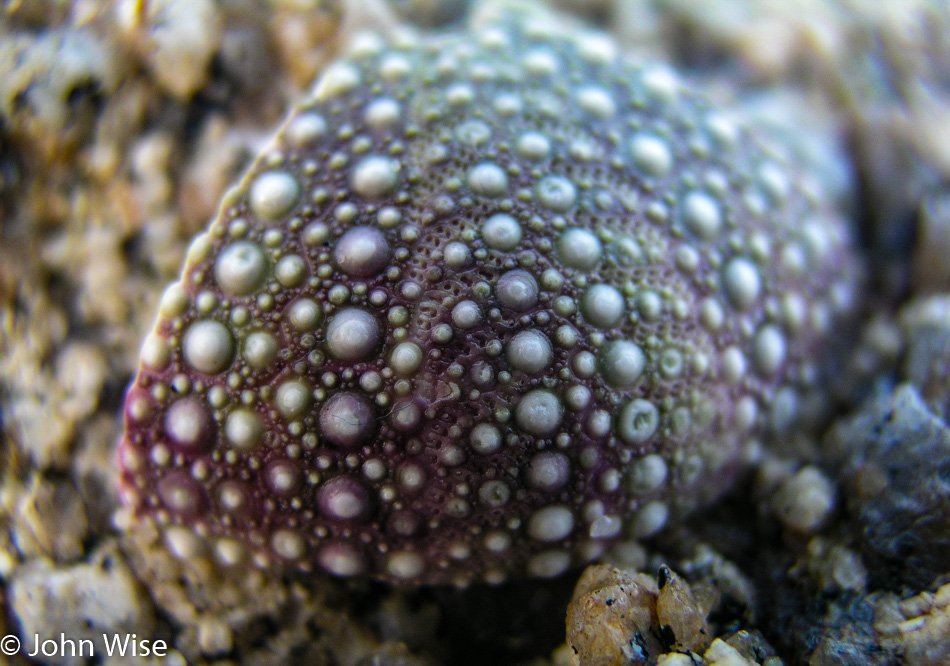
Think for a moment of the chemistry going on here of filtering calcium carbonate in an organized fashion and then adding pigment at different layers in order to have more vibrant purple bands alternating with bands of gray and bumps that fade to white.
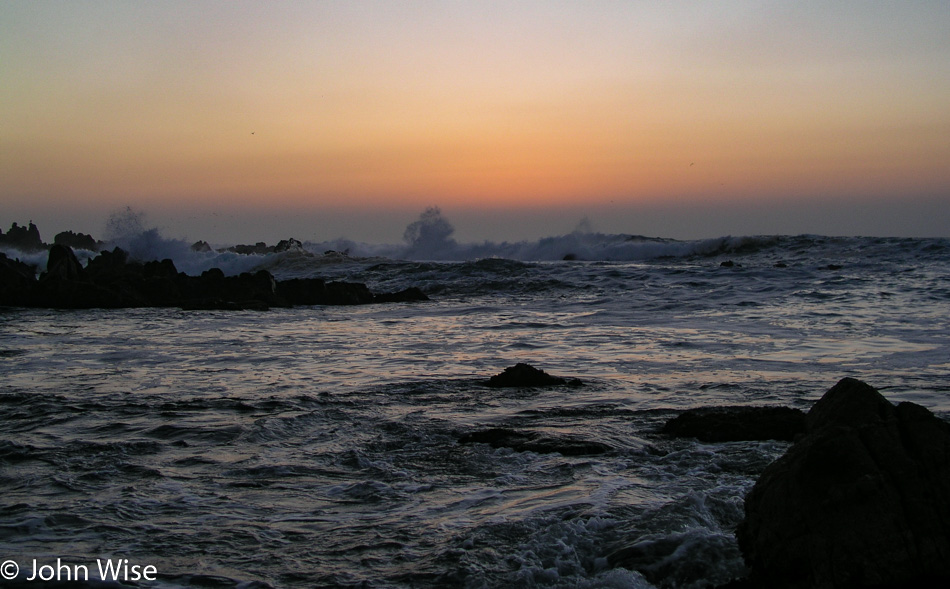
We spent the better part of the rest of our day out here oceanside, which will once again relegate our visit to the Monterey Bay Aquarium to a nighttime visit.
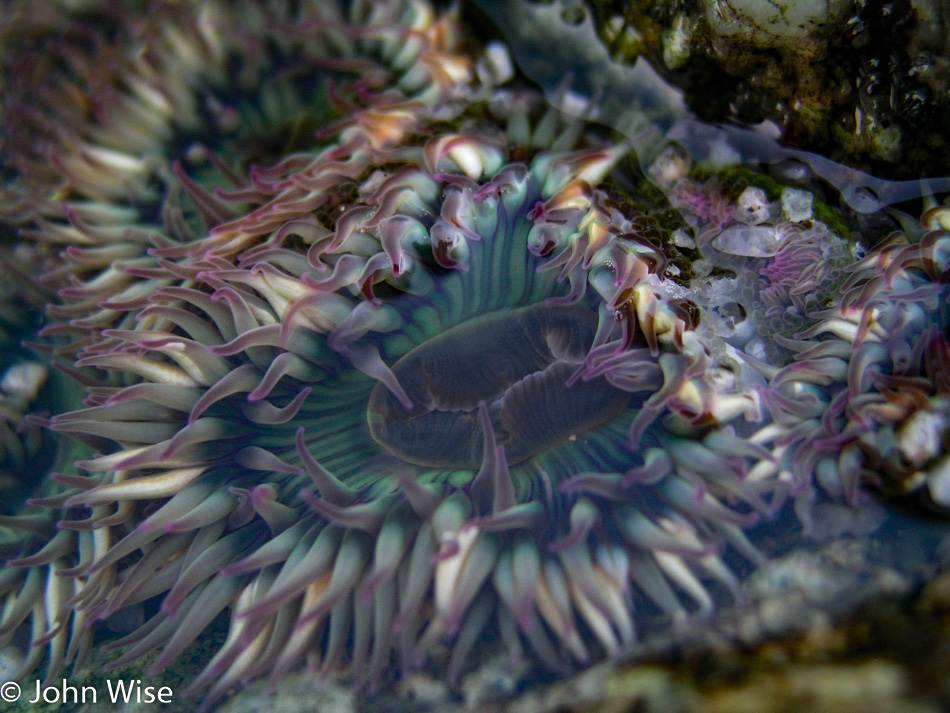
Even in the fading light of the day, the anemone can have a vibrancy verging on the psychedelic. I wonder if deep-sea anemones also exhibit such extraordinary colors, and if they do, what purpose would that serve at the depths where light cannot penetrate?
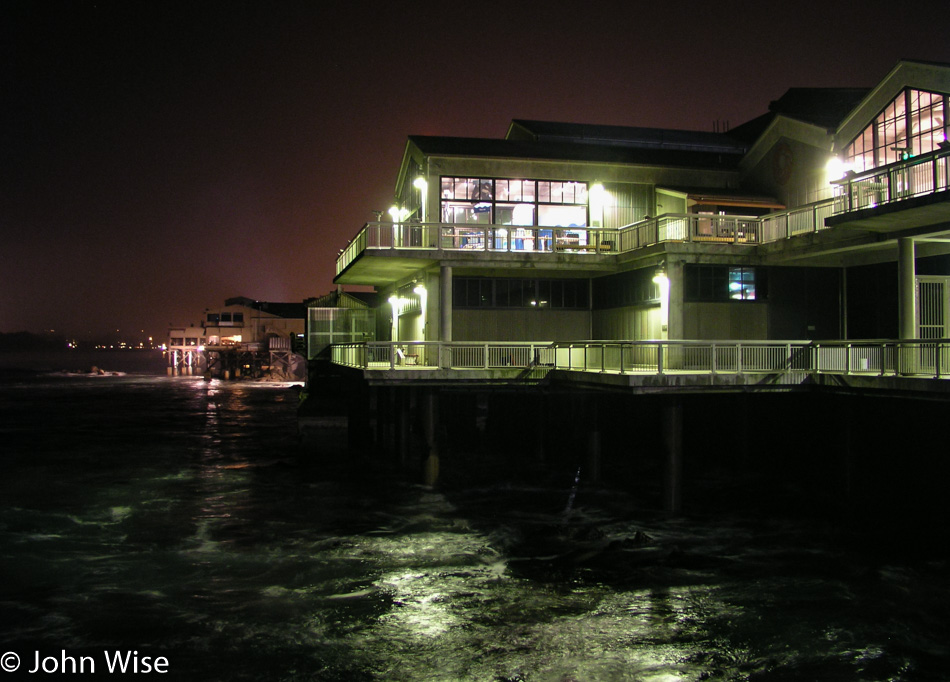
We were not going to pass up another visit to the aquarium, even if it meant foregoing a romantic moonlit walk along the ocean. Actually, we must make this visit as it’s a large part of why we purchased our year-long membership yesterday. The math was simple: at $19.95 per person entry fee and only $85 for the membership, we’d have nearly recovered the full cost with tonight’s visit in addition to yesterday’s. But tonight is special as it’s a “Members Only” evening that is scheduled to happen once a month and it just so happened that tonight is that night. No crowds, just peace and quiet with the fish on their way to lullaby land.
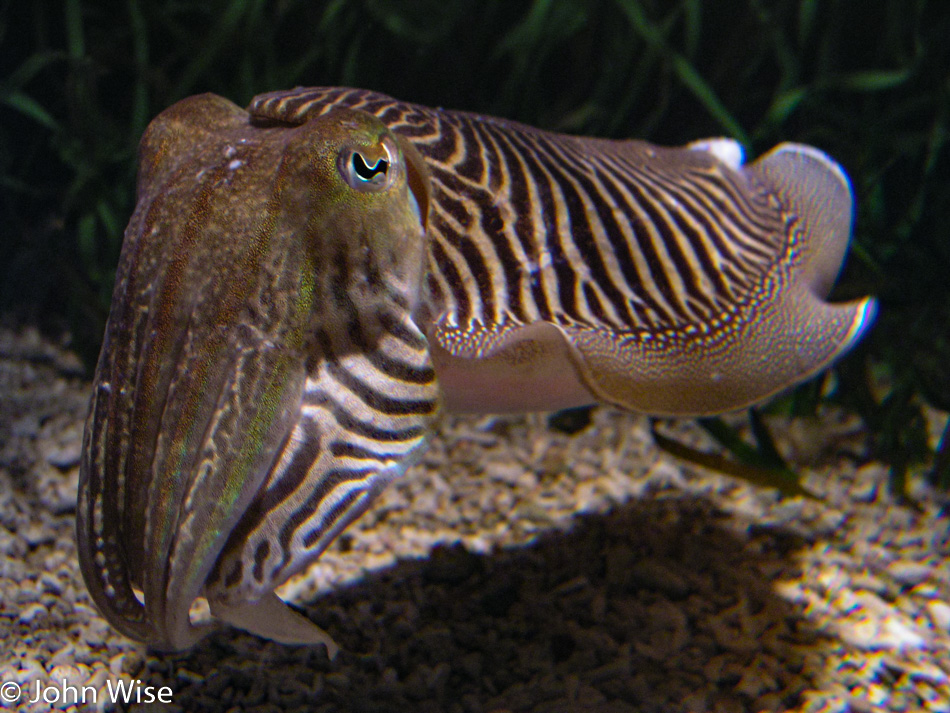
This trip could be known as the Mollusk and Cephalopod Tour. If you ever find an eye more intriguing than that of a cuttlefish, please share that with us. To learn more about the W-shaped pupil, I highly recommend Googling the most current information available.
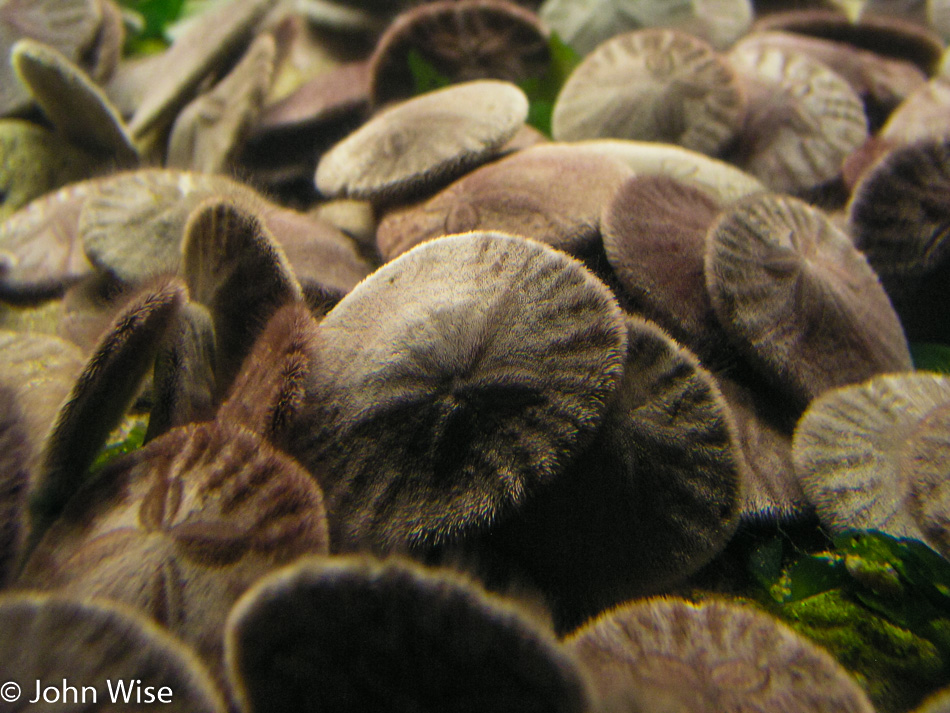
Meet the sand dollar, friend, and relative to the starfish.
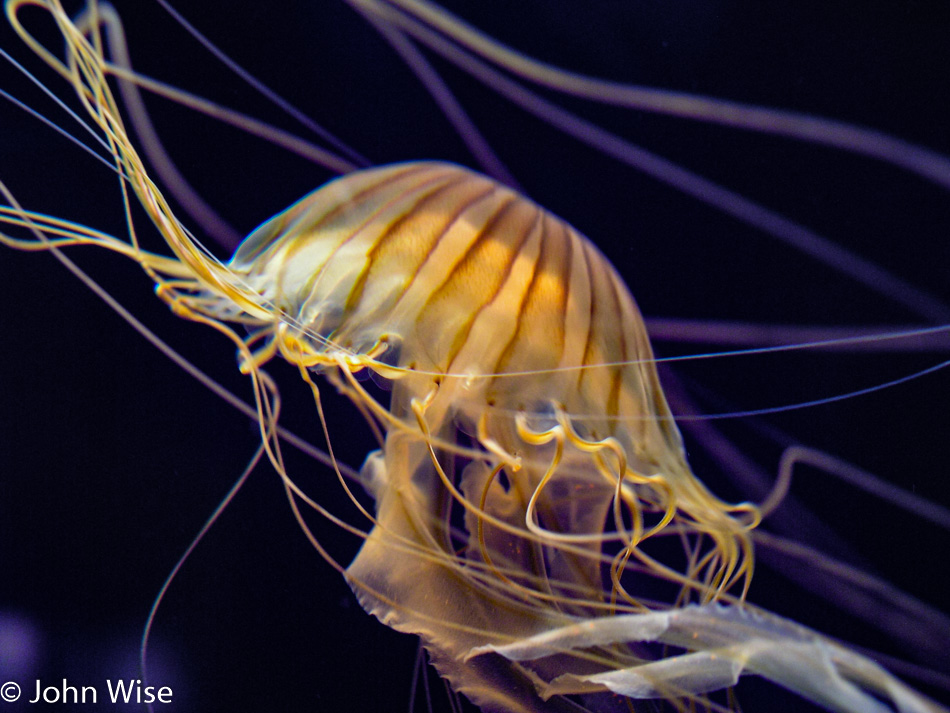
You can take 1,000 photos of the jellyfish exhibits here and never get a sharp image. Then again, you might get 100 that you are in love with and have no idea which one to share. Some of the jellies are semi-translucent bowls with lace-like centerpieces and a fringe of thread size fingers ringing the rim, while others look like psychedelic brains that could double as hats for old ladies.
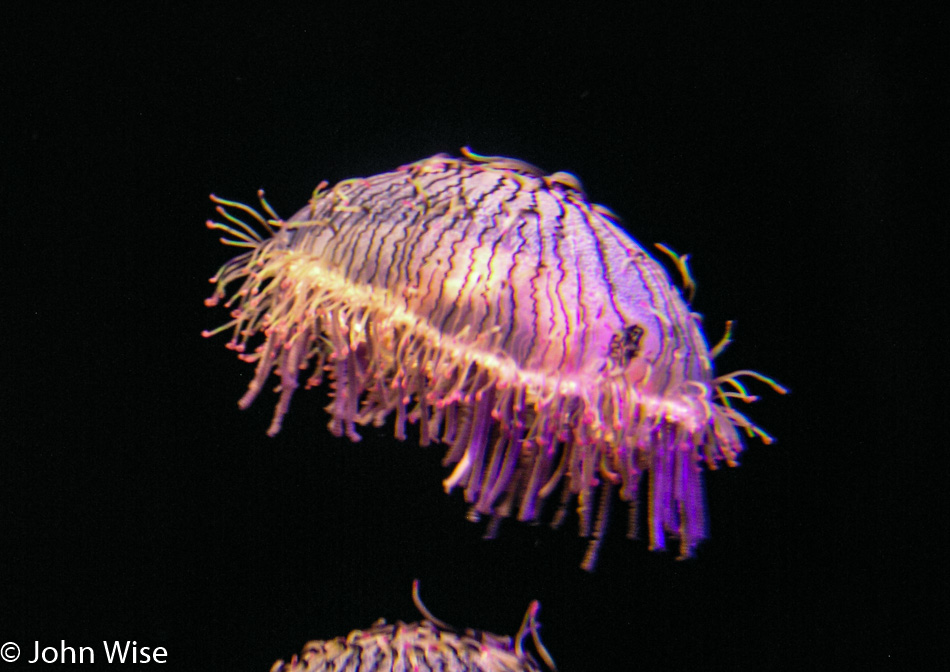
As I said, it’s difficult to take a sharp image, but I liked this jellyfish that looked more like a lampshade to me and needed to share it.
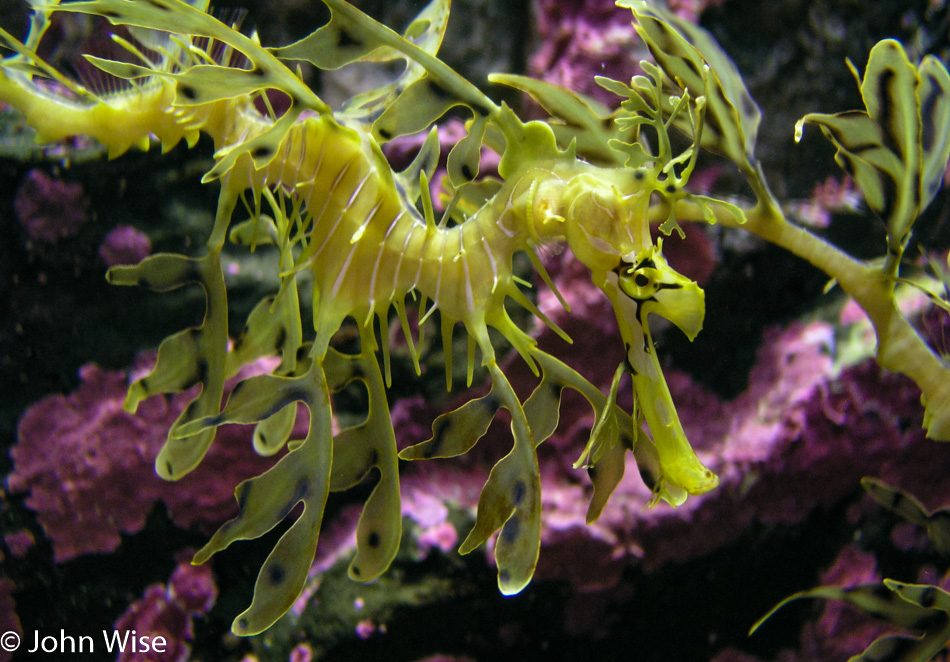
Leafy sea dragons are relatives of the – no, not the starfish! They are closely related to the seahorse. The seahorse is a relative newcomer to the oceans having branched off from pipefish maybe 13 million years ago. A bizarre fact about the leafy sea dragon, the female produces about 250 bright pink eggs that it will deposit in the male’s tail where they will attach themselves and receive oxygen from their father. After nine weeks, the eggs turn purple or orange, and the brood will start to hatch, at which point Dad must pump his tail, setting his young free. Only about a dozen of their offspring will survive.
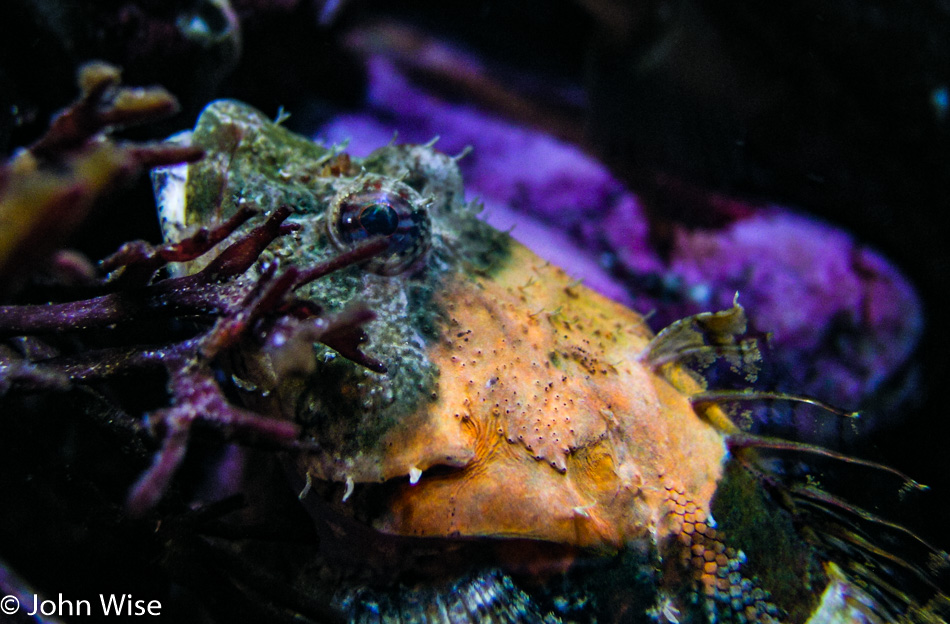
Here’s a fish because who doesn’t want to see a fish with a band of orange for a collar? We only had two hours here at the aquarium tonight but in our view, it’s always better to be somewhere incredible, experiencing the extraordinary and beautiful, than spending all day being bored somewhere because it’s easy and part of a routine.